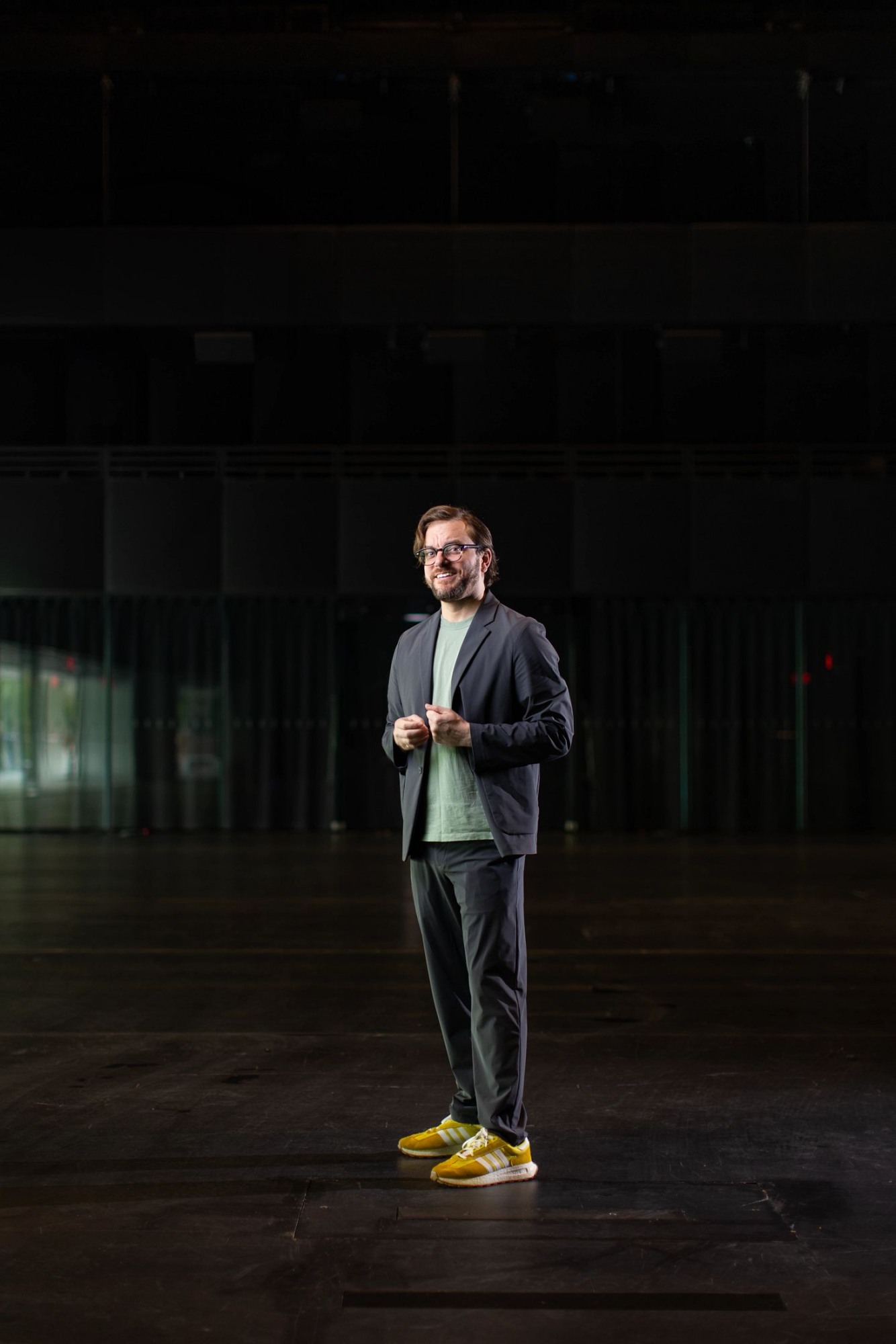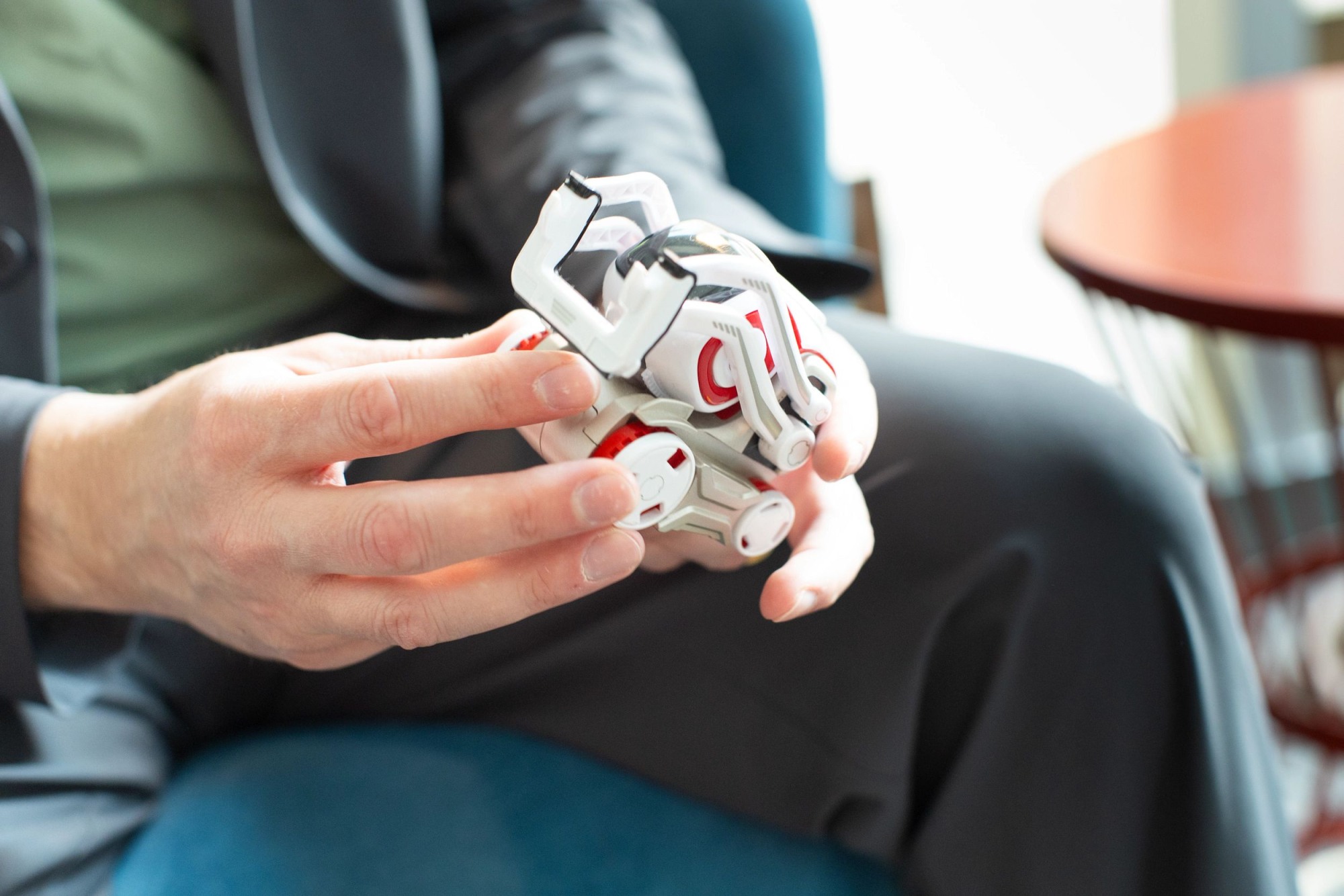PROVIDENCE, R.I. [Brown University] — Ten years ago, choreographer and then Brown University artist-in-residence Sydney Skybetter convened what he calls an “intimidatingly heterogeneous” group of artists, engineers, critical theorists and astronauts for the first Conference for Research on Choreographic Interfaces.
Through conversations, presentations and demonstrations, the group explored the ways in which bodies, computers and robots interact, and how artists could shape the future of robotics, drones and artificial intelligence. Now an associate professor of theatre arts and performance studies at Brown, Skybetter is poised to host the group’s 10th annual conference, Moondance, from June 12 to 14 at Brown.
The conference has come a long way, and so has Skybetter. In 2024, he was named director of the Brown Arts Institute, and he’s now hard at work planning a standout season of events, exhibits and experiences, while advancing the strategic direction of the institute, managing academic appointments and programs, and building collaborations across campus.
Ahead of the conference and the BAI’s 2025-26 season, Skybetter discussed how he became a scholar working at the intersection of movement and technology, what’s on tap at the Conference for Research on Choreographic Interfaces (CRCI) and why he’s excited for the years ahead at the Brown Arts Institute.
Q: How did you first become interested in the intersection of dance and technology?

I went to conservatory in New York City in 2000, so my entire artistic worldview was shaped by the aftermath of 9/11 and the Great Recession. The dance world faced tectonic shifts — the old model of “rent a theater, sell tickets, put on a show” collapsed. We had to figure out other means of making work and engaging audiences.
This wasn’t an idle, speculative exercise. We weren’t exploring technology and dance because it was cool — we did it because there weren’t any jobs. I and many of my collaborators developed expertise in telepresence, social media, content creation and eventually AI, virtual reality and robotics because our field of contemporary dance couldn’t survive unless it changed. The future of dance would be intertwined with these technologies, and I wanted artists to have a say in how these tools shape our field, rather than leaving those decisions to outsiders.
Q: What inspired you to create a conference exploring bodies, movement and emerging technologies?
When we founded CRCI in 2015, there wasn’t an obvious place to have conversations that simultaneously centered bodily autonomy, creative processes and emerging technologies. Silicon Valley was obsessed with optimization and disruption, rarely considering the impacts on our bodies or privacy. CRCI began as a bunch of nerds — and I use that word with great affection — at Brown, meeting to discuss collisions of bodies with emerging technologies and imagine otherwise. Over a decade, it has evolved into an international conference. The labor behind CRCI has always been distributed and coalition driven, and there’s a community of hundreds of people worldwide who contribute in various ways to the effort. Ultimately, CRCI seeks to ensure the future of our art is shaped by those who understand it best, and that emerging technologies of the body can be shaped by experts in embodiment.
Q: What kinds of scholars are drawn to the study of choreography, performance and technology?
We invite dancers, choreographers, improvisers, critical theorists, designers, engineers, statisticians and even astronauts. But the rationale isn’t to assemble an audacious range of expertise for its own sake. Rather, it’s to find ways to center embodied knowledge across the widest variety of computationally oriented fields. Embodied knowledge is something that has been systematically undervalued for centuries due to hierarchies between the seemingly rational “mind” and irrational “body.” Body artists bring knowledge that’s crucial for emerging modes of human-computer and human-robot interfaces. Every gesture, every interface starts with a body.
